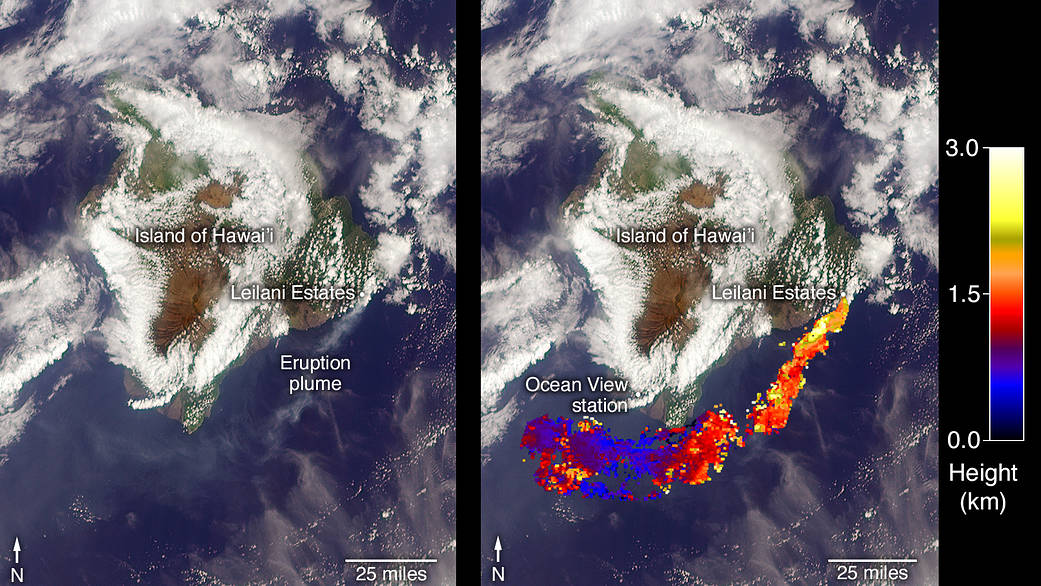NASA Satellite Spies Hawaii Volcano's Ash Plume (Photo)

A NASA Earth-observing satellite has given us another view of the volcanic outburst underway on the Big Island of Hawaii.
The Terra spacecraft spotted a plume of ash wafting from a new fissure on Kilauea volcano, whose current flare-up began last week after a powerful earthquake shook the Big Island. ("Flare-up" or "outburst" are better terms for the ongoing event than "eruption," because Kilauea, the most active volcano in the world, has been erupting more or less continuously since 1983.)
Terra imaged the plume Sunday (May 6) with its nine-camera Multi-angle Imaging SpectroRadiometer instrument, or MISR. [Photos: Fiery Lava from Kilauea Volcano Erupts on Hawaii's Big Island]
"The top of the plume near the fissure is at approximately 6,500 feet (2,000 meters) altitude, and the height of the plume decreases as it travels south and west," NASA officials wrote yesterday (May 9) in a description of the newly released MISR image.
See the Latest Updates on Hawaii's Kilauea Volcano Eruption
"These relatively low altitudes mean that the ash and sulfur dioxide remained near the ground, which can cause health issues for people on the island downwind of the eruption," they added.
Terra also got a good look at that sulfur dioxide, imaging big clouds of it on Sunday using a different instrument called the Advanced Spaceborne Thermal Emission and Reflection Radiometer (ASTER). The ASTER data also revealed "hotspots" on Kilauea — fresh lava flows, as well as a dozen newly formed fissures in the volcano.
Breaking space news, the latest updates on rocket launches, skywatching events and more!
The current Kilauea outburst has destroyed several dozen structures and impelled Hawaiian authorities to order the evacuation of more than 1,500 people to date. There have been no reports of death or serious injury related to the eruption so far.
Terra launched to Earth orbit in December 1999. It keeps tabs on the planet's climate cycle and other large-scale processes, as well as humanity's impact on ecosystems, using ASTER, MISR and three other science instruments.
Follow Mike Wall on Twitter @michaeldwall and Google+. Follow us @Spacedotcom, Facebook or Google+. Originally published on Space.com.

Michael Wall is a Senior Space Writer with Space.com and joined the team in 2010. He primarily covers exoplanets, spaceflight and military space, but has been known to dabble in the space art beat. His book about the search for alien life, "Out There," was published on Nov. 13, 2018. Before becoming a science writer, Michael worked as a herpetologist and wildlife biologist. He has a Ph.D. in evolutionary biology from the University of Sydney, Australia, a bachelor's degree from the University of Arizona, and a graduate certificate in science writing from the University of California, Santa Cruz. To find out what his latest project is, you can follow Michael on Twitter.
